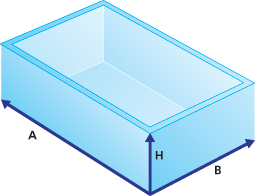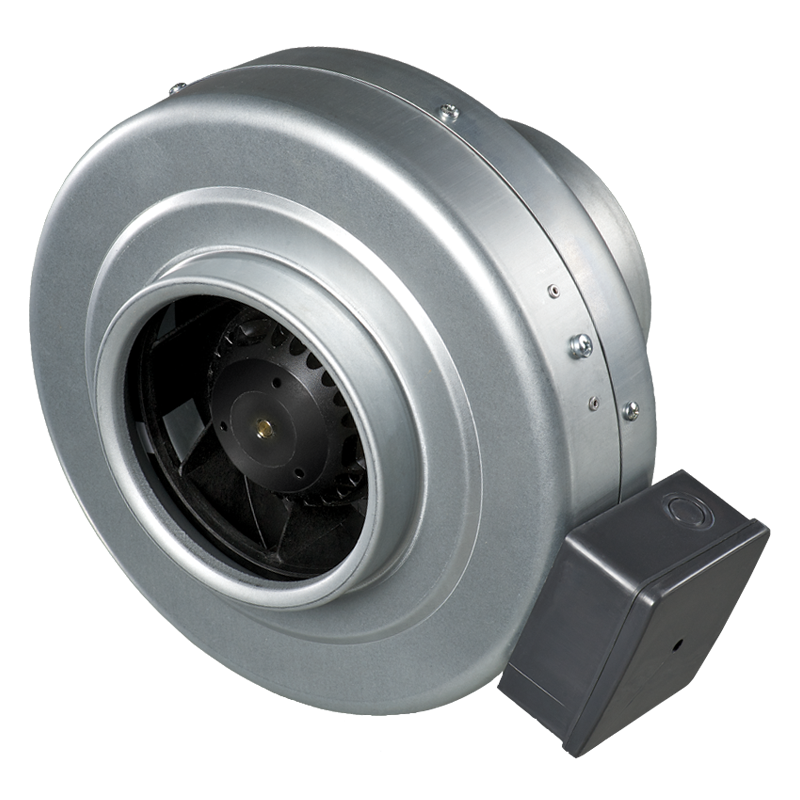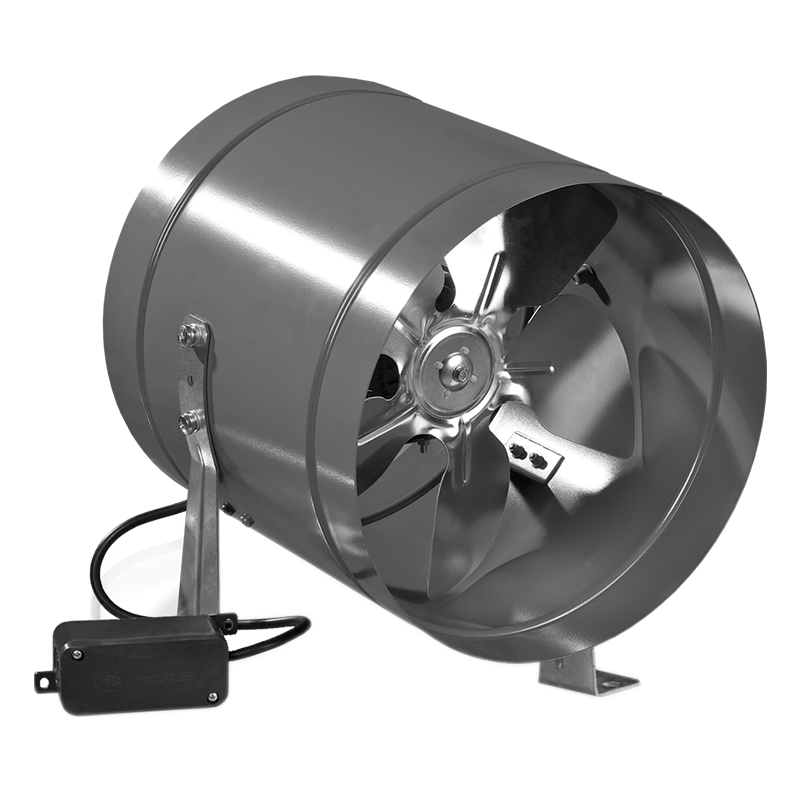

Product catalogue «Industrial fans»
Industrial fans are used in ventilation systems of commercial and industrial spaces. For example, such fans are used in offices, community agencies, small workshops, production floors etc.
The necessary air flow rate and the respective number and capacity of fans is defined for each space individually in consideration of the presence of hazardous agents (substances) or is specified according to the preliminary assessment results.
If the nature and amount of hazardous agents (substances) cannot be quantified, the air change is expressed in air change rate:
L = Vspace * Ach (m3/h),
where Vspace is the space volume [m3];
Ach is the minimum air change rate [1/h], see the air change rate table.
How do you calculate the space volume?
To calculate the total space volume in cubic metres.
Use this simple formula:
Length х width x height = space volume [m3]
A x B x H = V (m3)

For example, the room is 7 m long, 4 m wide and 2.8 high. To define the volume of ventilation air calculate the room volume: 7 х 4 х 2.8 = 78.4 m3. Then use the tables below with recommended air change rate to define the required fan capacity.
The air change is defined depending on the number of people on the premises:
L = L1 * NL (m3/h)
where L1 is the air volume rate per person, m3/h*person;
NL is the number of people on the premises
20-25 m3/h per person, minimum physical activity
45 m3/h per person, light physical activity
60 m3/h per person, heavy physical activity
The air change to account for moisture liberation is calculated as follows:
L= D / (dv-dn) * ρ (m3/h)
where D is the amount of moisture [g/h];
dv is the moisture content of the extract air [g water /kg air];
dn is the moisture content of the supply air [g water /kg air];
ρ is the air density [kg/m3] (at 20 °C = 1.205 kg/m3);
The air change to remove excess heat is calculated as follows:
L= Q / ρ * Cp*(tv-tn) (m3/h)
where Q is heat released indoors [kW];
tv is the extract air temperature [°C];
tn is the supply air temperature [°C];
ρ is the air density, [kg/m3] (at 20 °C = 1.205 kg/m3);
Cp is the air heat-absorption capacity, [kJ]/[(kg·K)] (at 20 °C); Cp=1.005 kJ/(kg·K))
Air change rates table:
| Industrial premises and large spaces | Air change rate |
| Theatre, cinema or conference hall | 20-40 m3 per visitor |
| Office space | 5-7 |
| Bank | 2-4 |
| Restaurant | 8-10 |
| Bar, café, pub, billiard room | 9-11 |
| Kitchen area of a café or restaurant | 10-15 |
| Convenience store | 1,5-3 |
| Chemist's (retail space) | 3 |
| Garage and auto-repair shop | 6-8 |
| Public toilet | 10-12 (or 100 m3 per pan) |
| Dance floor, disco | 8-10 |
| Smoking room | 10 |
| Server room | 5-10 |
| Gym | At least 80 m3 per 1 athlete and at least 20 m3 per viewer |
| Beauty salon (up to 5 workstations) | 2 |
| Beauty salon (more than 5 workstations) | 3 |
| Warehouse | 1-2 |
| Laundry | 10-13 |
| Swimming pool | 10-20 |
| Industrial paint shop | 25-40 |
| Machine workshop | 3-5 |
| School classroom | 3-8 |
The air change is calculated depending on the maximum allowable concentration of substances:
L= GCO2 / Updk-Up(m3/h)
where GСО2 is the amount of СО2 released [l/h],
UPDK is the maximum allowable concentration of CO2 in the extract air [l/m3],
UP is the gas content in the supply air [l/m3].

DOMOVENT VKMz series

